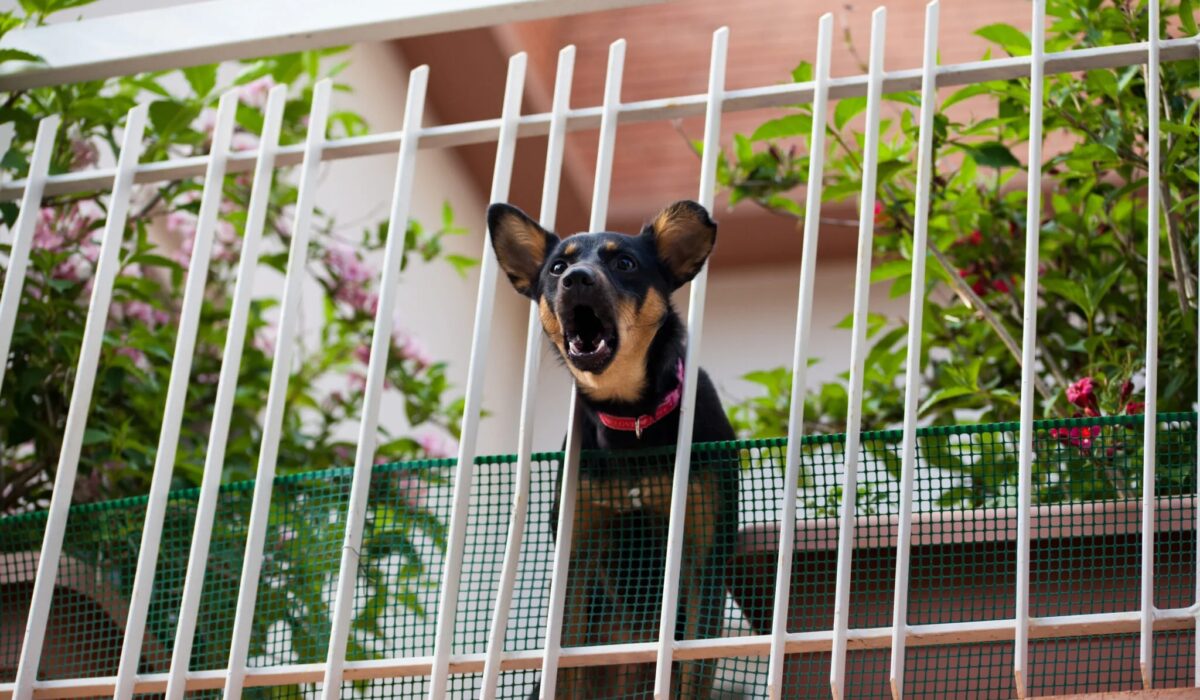Why Does My Dog Bark at Other Dogs? Understanding Your Pet’s Behavior
Dogs are incredible companions, offering their loyalty, affection, and playful energy in countless ways. However, their social signals—including barking at other dogs—can sometimes be confusing or even frustrating for owners. When your dog barks at other dogs during walks, at the park, or even through the fence, it’s natural to wonder, “Why does my dog bark at other dogs?” Understanding the reasons behind this behavior is vital to addressing it effectively.
In this comprehensive and detailed guide, we will explore the various motivations for your dog’s barking behavior, how to interpret their signals, and practical, step-by-step methods to help your dog become more confident and controlled around other canines.
Why Is My Dog Barking at Other Dogs? A Deep Dive
Knowing why your dog barks at other dogs entails understanding their emotions and instincts. Dogs communicate through body language and vocalizations, with barking being one of the most prominent signals. However, a single bark can have multiple meanings depending on the context, tone, and your dog’s overall demeanor.
Context Is Key
Before jumping to conclusions about your dog’s behavior, observe the situation. Is your dog excited, scared, or trying to assert dominance? Answering these questions will help you tailor your response, training, and management strategies effectively.
The Range of Common Reasons for Barking
Let’s explore these reasons in depth:
1. Excitement and Playfulness
Some dogs bark with enthusiasm when they see other dogs, especially if they are social and outgoing. This excitement is often loud, energetic, and accompanied by wagging tails, jumping, or bouncing—kind of like a kid seeing their best friend.
Example: A Golden Retriever at the park spots another dog and barks loudly, tail wagging, ready to play.
How to Respond: Reinforce calm greetings. Encourage your dog to sit or focus on you, rewarding obedience with treats. Over time, this helps reduce over-the-top excitement.
2. Territorial and Protective Instincts
Many dogs are naturally territorial, especially when they perceive another dog as an intruder—whether that’s in their yard or during a walk.
Example: A small terrier barks fiercely at passing dogs from the porch, trying to guard their home.
How to Handle: Gradual desensitization helps the dog feel less threatened. Reward calm behavior during controlled exposures, and avoid punishing barking, which may increase anxiety.
3. Fear and Anxiety
Fear-based barking occurs when your dog feels threatened, nervous, or insecure. This often involves trembling, cowering, or retreating, and barking is used as a defensive tool.
Example: An shy dog barks nervously at a large, unfamiliar dog but tries to hide behind their owner.
How to Manage: Avoid forcing interactions. Instead, create a safe environment and expose your dog to new dogs slowly, rewarding patience and calmness.
4. Dominance, Control, or Aggression
Some dogs bark to display dominance or control in social interactions. This may involve growling, stiff posture, and direct eye contact while barking loudly.
Example: A dog in a dog park lunges forward, barking aggressively at other dogs to establish rank.
Important: Aggressive barking requires professional intervention to prevent escalation and ensure safety for everyone.
5. Poor Socialization and Past Trauma
Dogs lacking proper social exposure during puppyhood might react fearfully or defensively. Dogs who have experienced negative interactions or trauma with other dogs may bark out of anxiety or distrust.
Example: A rescued dog that had bad experiences with other dogs now barks aggressively or anxiously on seeing new animals.
Solution: Slow, positive socialization with calm, friendly dogs can help rebuild your dog’s confidence.
Interpreting Your Dog’s Signals: Body Language and Vocalization
Understanding the full picture requires more than just listening to barking; observing body language provides critical clues about your dog’s emotional state.
Excitement
- Wagging tail (high and vigorous)
- Bouncing or jumping
- Relaxed face, mouth open
- Eagerbody posture
Fear or Anxiety
- Tucked tail
- Ears back
- Avoiding eye contact
- Cowering or hiding
- Quivering or trembling
- Barking nervously or with a high-pitched tone
Aggression
- Hackles raised (hair along back standing up)
- Stiff, tense body stance
- Growling with bared teeth
- Erect ears
- Direct stare
By correctly reading these cues, owners can prevent situations from escalating and respond more appropriately.
Effective Training and Management Techniques
Managing your dog’s barking at other dogs requires patience, consistency, and tailored training. Here are the most effective strategies:
1. Practice Desensitization and Counter-Conditioning
Step-by-step process:
- Praise, treat, or play with your dog when they ignore or calm down around other dogs.
- Slowly move closer, repeating the process.
- Always stop before your dog becomes reactive or overly excited, and reward calmness.
2. Teach Self-Control Commands
Commands such as “quiet,” “calm,” “leave it,” and “focus” can help redirect your dog’s attention and reduce barking.
Training tips:
- Use treats to reward calm behavior.
- Practice in low-distraction environments first.
- Use the command when your dog starts barking at other dogs, and reward when they obey.
3. Socialization in Controlled Settings
Arrange for your dog to meet friendly, well-behaved dogs in controlled environments like training classes or supervised playdates. Make these sessions short and positive, gradually increasing duration as your dog’s confidence grows.
4. Manage Triggers and Environment
- Keep your dog on a leash in busy areas to prevent lunging or pulling.
- Use visual barriers like fences, parked cars, or hedges during walks if your dog reacts to passing dogs.
- Avoid high-stimulation environments until your dog is better socialized.
5. Focus on Enrichment and Exercise
A well-exercised dog is less likely to engage in excessive barking due to pent-up energy. Incorporate daily walks, interactive toys, puzzle feeders, and obedience training.
6. Consider Professional Assistance
If your dog’s barking is intense, aggressive, or persistent despite your efforts, consult a certified dog trainer or behaviorist. They can develop individualized plans, sometimes incorporating behavior modification techniques or medication if warranted.
Additional Strategies for Peaceful Dog Interactions
- Use distraction tools:Carry treats, squeaky toys, or a favorite ball to redirect your dog’s attention when they start barking.
- Create calm routines:Establish a consistent walking and socialization schedule to build confidence.
- Use calming aids:Products such as calming sprays, collars, or natural supplements might help reduce anxiety. Consult your veterinarian before use.
- Avoid punishment-based training:Harsh corrections or yelling can increase anxiety and worsen the problem.
Advanced Approaches and Considerations
Dog-Specific Behavioral Patterns
Every dog is unique, and some breeds are more prone to reactive barking. For example, terriers and protective guard breeds often have stronger territorial instincts, while high-energy breeds may bark out of excitement.
Tip: Tailor your approach based on your dog’s breed, personality, and history.
Socialization Tips for Puppies
- Start socializing puppies early, ideally before 16 weeks of age.
- Expose them to different dogs, environments, sounds, and people.
- Use positive reinforcement to encourage good social habits.
- Enroll in puppy socialization classes for guided exposures.
Handling Older or Reactive Dogs
Older dogs or those with long-standing reactive behaviors may need more patience and specialized training. Consistency is critical, and sometimes, managing the environment is the best approach.
Recognizing When to Seek Veterinary Help
Excessive or sudden barking might signal underlying health issues, such as discomfort, hearing loss, or neurological problems. Always consult your veterinarian if:
- The barking is new or increased suddenly.
- Your efforts at training and management are ineffective.
In some cases, medication or anti-anxiety treatments prescribed by your vet can complement behavioral training.
Final Words: Patience, Understanding, and Building Confidence
“Why does my dog bark at other dogs?”requires patience, empathy, and consistent effort.Your goal is to help your dog express themselves appropriately, feel safe, and enjoy positive social experiences.
By systematically understanding your dog’s triggers, applying positive reinforcement techniques, and seeking professional help when needed, you can foster confidence and calmness in your dog. Over time, your dog will learn to navigate social situations more comfortably, leading to fewer stressful encounters and a stronger, trusting bond.
Changing behavior doesn’t happen overnight, but with persistent, loving effort, your dog can become more relaxed and enjoyable to be around—especially when seeing other dogs.




